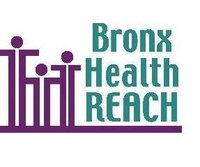Arkansas and Women’s Right to Choose
Any typing I do between working the night shift and working it again should be spent on writing the 10-page paper that hangs over my head. But my “morning” ritual of local coffee and perusing the newspaper took precedent on a recent rainy day. Most days, as my mind recoils from a long night of intensive care nursing and an interrupted day of always-too-short sleep, I have very little energy to invest in the headlines that the New York Times brings to me; so and I simply skim, enjoy the taste of coffee, and the feel of newsprint between my fingers. But this day was different.
“ARKANSAS ADOPTS A 12-WEEK LIMIT FOR ABORTIONS,” grabbed me out of my fog like the cold winter air. Instant anger prompted a thorough read, instead of my usual picture-book browsing. To my disbelief, the great state of Arkansas successfully passed the preposterously named law, “The Human Heartbeat Protection Act,” and in doing so, is limiting an Arkansas woman’s right to an abortion after the first fetal heartbeat is heard during her initial trimester of pregnancy.
Yes, significant opinion suggests this unconstitutional law will be overturned with little difficulty. But, in a state with only two abortion providers–one clinic providing both medical and surgical abortions, and one providing only medical, which providers can only administer until 8 weeks of pregnancy–this law poses an incredible threat to Arkansas women’s freedom and ability to choose whether to proceed with a pregnancy.
Geography already greatly limits Arkansas women’s choice to terminate pregnancy. A resident of Fort Smith, Arkansas’ second-largest city, would have to drive 186 miles, or about three and a half hours, to get to the only existing abortion providers, both located in Little Rock. In New York-speak, a trip from Manhattan to Syracuse–not an easy commute that a stressed, emotional, financially-strapped woman could schedule and make. I made quick calls to both abortion providers and learned that scheduling time is currently minimal–an average of one week wait. But with the potential travel distance, scheduling around normal life, and this new law restricting legal abortion time down to only 12 weeks, a woman could easily miss her window.
This law not only compounds Arkansas’ access problems, but drastically infringes upon its female citizens’ rights to their own beliefs and decision-making. By inferring that human life starts at heartbeat and booking a law to regulate and criminalize abortion decisions based on that belief, Arkansas legislators and anti-abortion activists have moved the national abortion debate into a horribly sticky area–the legislation of personhood.
The way I read it, this law insinuates that if a woman chooses to have an abortion after 12 weeks–the time a fetal heartbeat can first be heard–she is engaging in the murder of a human, not simply the execution of a medical procedure to resolve a condition she does not desire. The state of Arkansas is attempting to legislate beliefs, forcing its women to view an unborn fetus is a child–a requirement that has no place in the legal system of America.
The only place that this belief should be freely decided upon, is in the heart and mind of the individual woman who is choosing the fate of her life and body, and the emotional burden of this choice should not be exacerbated by state law that promotes unfounded guilt and shame.
It is incredulous that a state is proliferating such discrimination against its female citizens to the detriment of their freedom, emotional peace, and rights. I look forward to the speedy overturn of this law, but I offer my sincerest condolences to all of the women whose rights, choice, and freedom to foster their own beliefs will be affected until that day.
Any typing I do between working the




